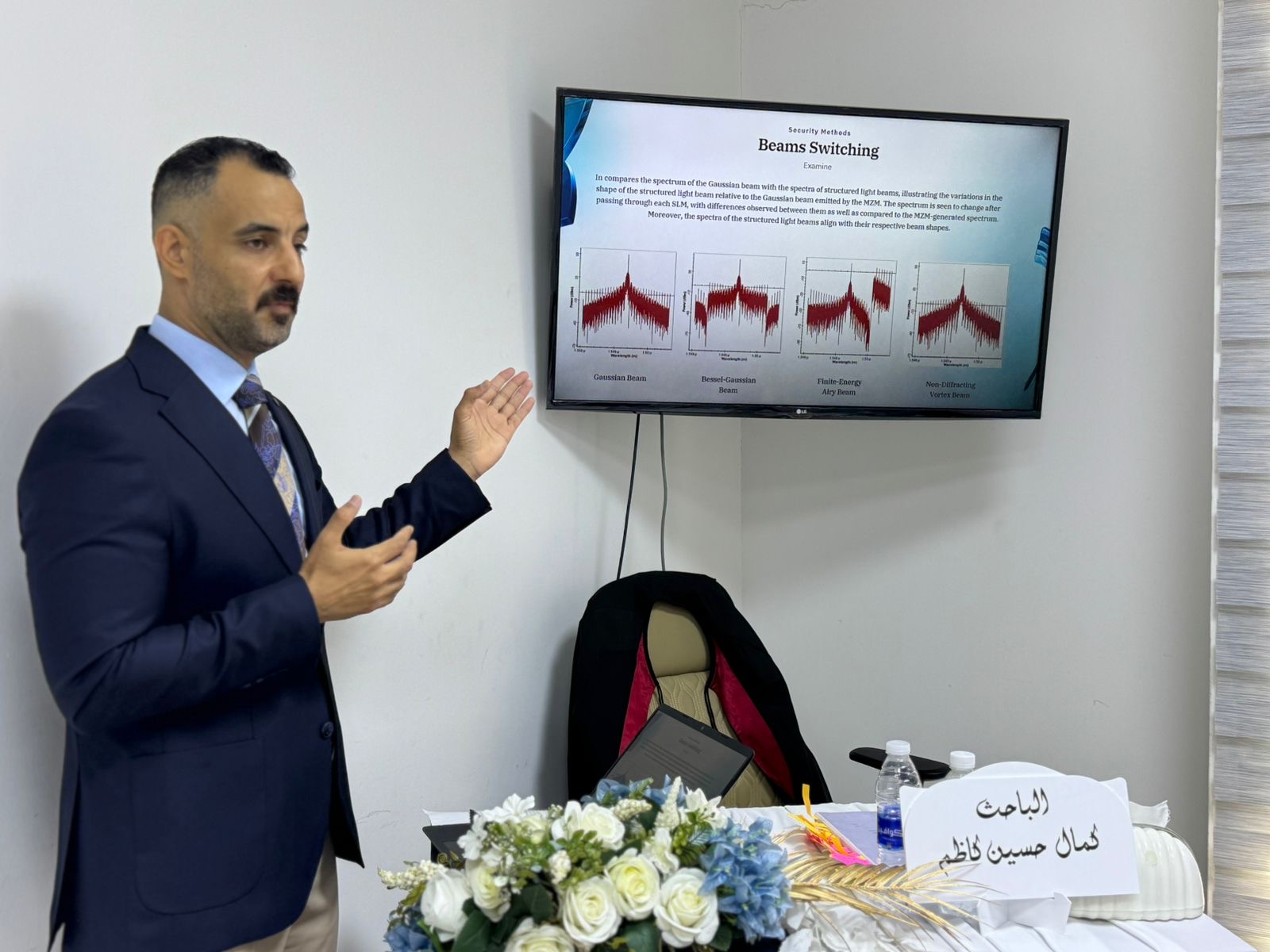Visitors: 28544528 Views
Done By: Laser & Optoelectronic Engineering Department
Post Date: 2025-08-28
Last Browse: 2025-09-14

This thesis explores the design and modeling of physical layer security in free space optical (FSO) communication systems. It highlights the advantages of FSO, such as high bandwidth and immunity to electromagnetic interference, while addressing challenges like turbulence and interception. The study focuses on non-diffracting beams (Bessel-Gaussian, Finite-Energy Airy, and Non-Diffracting Vortex) for their self-healing and shape-preserving properties. Two innovative methods are proposed: Optifusionsteganography, which hides data in optical beams, and beam switching, which dynamically changes beam types for added protection. Simulation tools (MATLAB and OptiSystem) were used to test performance under varying atmospheric conditions. Metrics such as BER, SNR, scintillation index, Strehl ratio, and overlap were evaluated. Results show that these methods significantly enhance transmission security and robustness without reducing efficiency. The work introduces a multi-layered security model integrating structured light with steganography and spatial modulation. Applications include military, aerospace, and high-capacity optical wireless networks. The thesis concludes with recommendations for further improving secure FSO technologies.